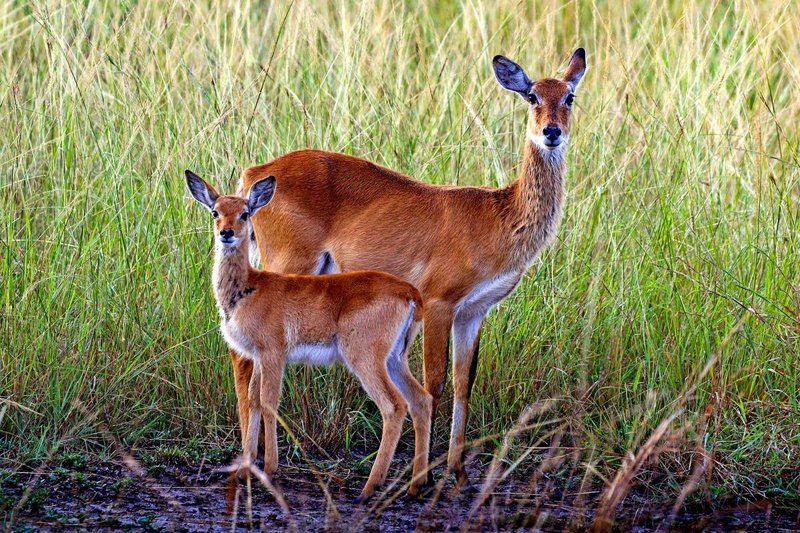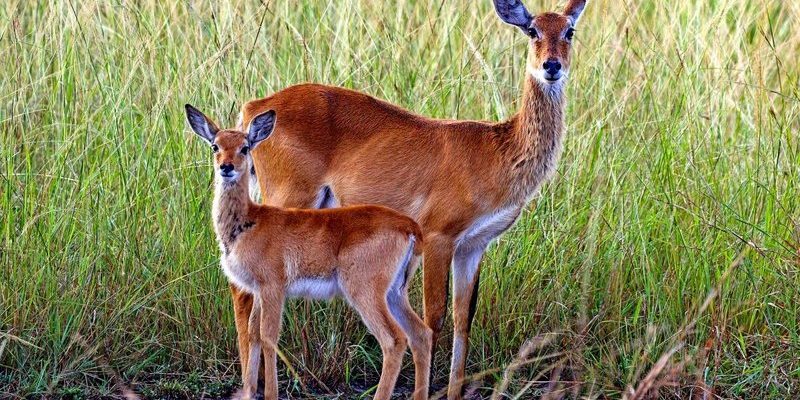
The story of the Ugandan Kob is much more than just its striking looks. It’s interwoven with the rich tapestry of Uganda’s ecosystems and the challenges faced over thousands of years. From ancient ancestors to their modern-day habitat, the evolution of this antelope offers insights into not only their survival but also the health of our planet’s biodiversity. So, grab your favorite drink, and let’s dive into the evolutionary history of the Ugandan Kob.
Origins of the Ugandan Kob
The Ugandan Kob belongs to the genus *Kobus*, which is part of the large family of antelopes known as Bovidae. To understand the evolution of the Ugandan Kob, we need to wind the clock back millions of years. The ancestors of modern antelopes began to diversify during the Miocene epoch, around 23 to 5 million years ago. During this period, the climate shifted, creating grasslands and open habitats that these animals began to exploit.
As the landscape changed, so did the antelopes. The first true representatives of the Kob lineage emerged during the Pleistocene epoch, around 2.5 million years ago. Here’s where it gets interesting: the Ugandan Kob is closely related to the waterbuck and the kob antelope. Each of these species adapted uniquely to their environments, showcasing nature’s way of designing survival strategies based on available resources and climatic conditions.
Over time, the Ugandan Kob adapted to thrive in the wetlands and grasslands of its native Uganda. Their long, slender legs and impressive agility helped them escape predators, while their distinct coloration provided effective camouflage against the tall grasses. You might wonder how these adaptations play a role in their survival. Simple! These features not only help them avoid being spotted by predators but also allow them to navigate their habitats efficiently.
Physical Characteristics
One of the most striking features of the Ugandan Kob is its appearance. Males are particularly eye-catching, boasting a rich chestnut-brown coat with white underbellies and distinctive white markings on their faces and legs. Females, on the other hand, are slightly smaller and lack the impressive horns found in males.
The horns of male Ugandan Kobs can grow up to 90 centimeters long and curve backward, resembling a graceful arch. These horns aren’t just for show; they play a vital role in male-to-male competition during mating season. Dominant males often showcase their strength through displays of agility and power, ensuring they attract the best mates. Honestly, it’s like the animal kingdom’s version of a talent show!
Their keen eyesight and acute sense of smell are also essential to their survival. These adaptations help them detect potential threats in their environment, allowing for quick reactions. Just picture a group of Ugandan Kobs grazing peacefully, when suddenly, one of them catches a whiff of a predator nearby. In a flash, the whole group can spring into action, gracefully leaping away to safety.
Habitat and Range
The Ugandan Kob primarily inhabits the open savannahs and wetlands of Uganda, particularly within protected areas like Queen Elizabeth National Park and Murchison Falls National Park. These areas provide the perfect blend of grasslands and water sources that are crucial for their survival.
But why are these habitats so important? Well, the Ugandan Kob relies on them for food, safety, and breeding. The lush grasses that grow in these regions are their primary food source, providing the nutrients they need to thrive. Their preference for these environments makes them an important species for maintaining the health of grassland ecosystems.
However, habitat loss and degradation pose significant threats to their populations. Human activities such as agriculture, logging, and urban development encroach on their territory, making it increasingly difficult for them to find a safe space to live. It’s a stark reminder of how interconnected all species are within an ecosystem—when one faces challenges, it can impact many others.
Mating and Social Behavior
Now, let’s talk about the social life of the Ugandan Kob! These antelopes are known for their fascinating social structures. Males are territorial and often form small groups called “bachelor herds,” while females are more social and can be found in larger herds consisting of other females and their young.
During the mating season, males engage in a behavior called “lekking.” This is where they gather in specific areas and display their prowess to attract females. It’s like hosting a party where only the most charming and fit individuals get to impress. The males perform a series of displays, including hopping, vocalizations, and even mock fights, to showcase their strength and fitness.
The mating rituals can be quite competitive, as the most dominant males win the chance to mate with the females in their territory. After mating, females typically give birth to a single calf after a gestation period of about seven months. Calves are born with a spotted coat, which helps them blend into their surroundings as they grow and learn to navigate the world.
Conservation Status and Challenges
Unfortunately, despite their unique charm and important role in the ecosystem, Ugandan Kobs face various conservation challenges. Their population is currently classified as “Least Concern” by the IUCN; however, that doesn’t mean they’re completely safe. Habitat loss and poaching present serious threats to their survival.
Efforts to conserve the Ugandan Kob involve habitat protection, anti-poaching measures, and promoting sustainable tourism. Protected areas, such as national parks, play a crucial role in safeguarding these antelopes and their habitats. Ecotourism can also raise awareness and generate funds for conservation efforts.
Local communities often play a vital role in conservation strategies. By involving them in tourism and education about the value of wildlife, they can help protect these beautiful animals and their habitats. Here’s the thing: the survival of the Ugandan Kob isn’t just about the animals themselves; it’s also about preserving the rich biodiversity of Uganda.
The Future of the Ugandan Kob
Looking ahead, the future of the Ugandan Kob hinges on continued conservation efforts and raising awareness about their importance in the ecosystem. Collaborating with local communities, researchers, and conservation organizations can lead to effective strategies to protect this species and its habitat.
Moreover, as climate change impacts ecosystems around the globe, it’s essential to monitor how these changes may affect the Ugandan Kob’s habitat. Wetlands could shift, grasslands could change, and it’s crucial to adapt conservation efforts accordingly.
The story of the Ugandan Kob is a reminder of the intricate connections that exist within nature. By valuing and protecting these connections, we can ensure a thriving future not just for the Ugandan Kob, but also for the myriad of species that share its habitat.
In short, the journey of the Ugandan Kob is more than just an evolutionary tale; it’s a testament to the resilience of life. As we continue to learn and grow, let’s keep this captivating antelope in mind, representing not just an animal, but a vital part of a balanced ecosystem.

